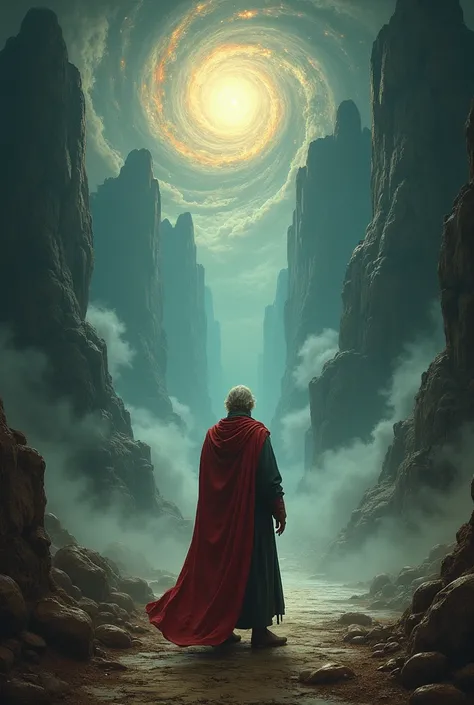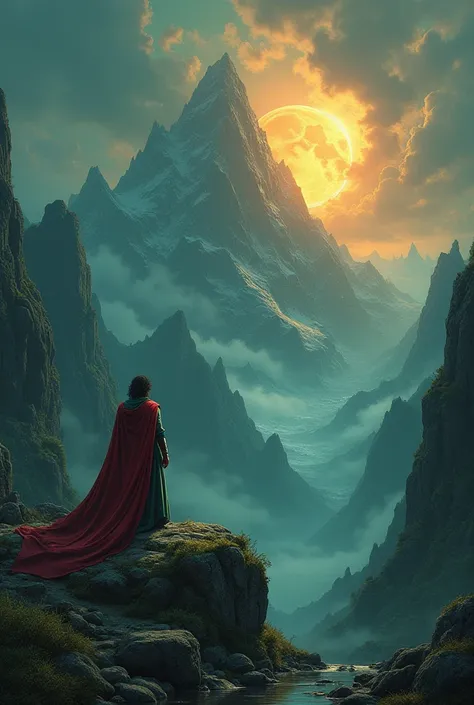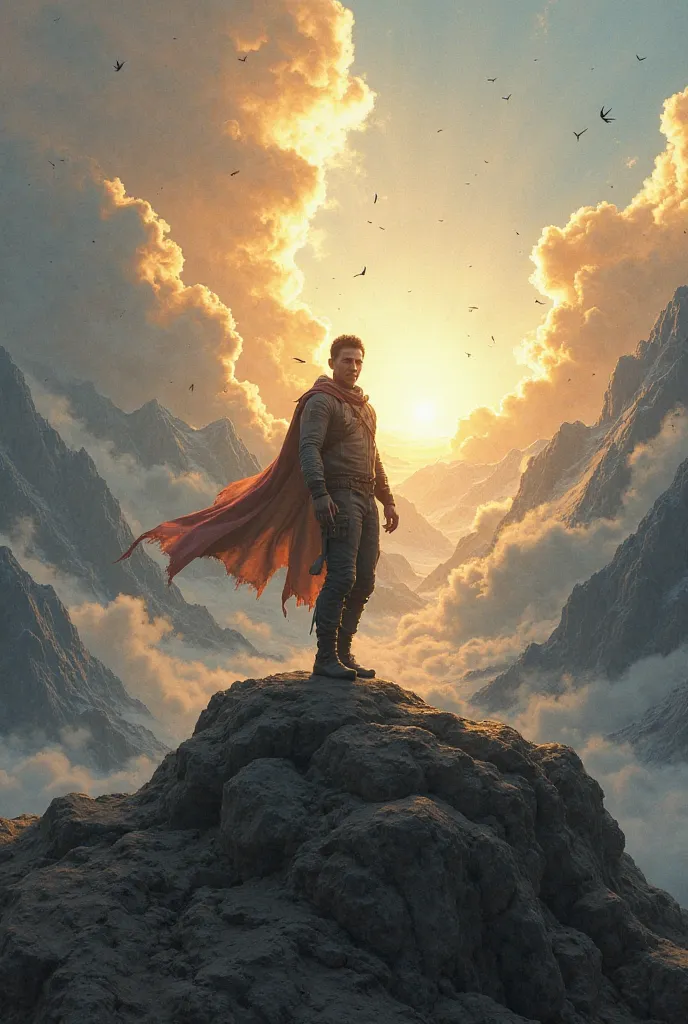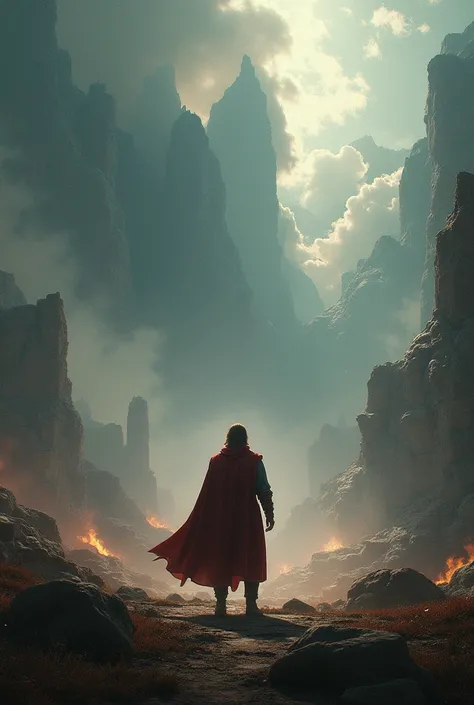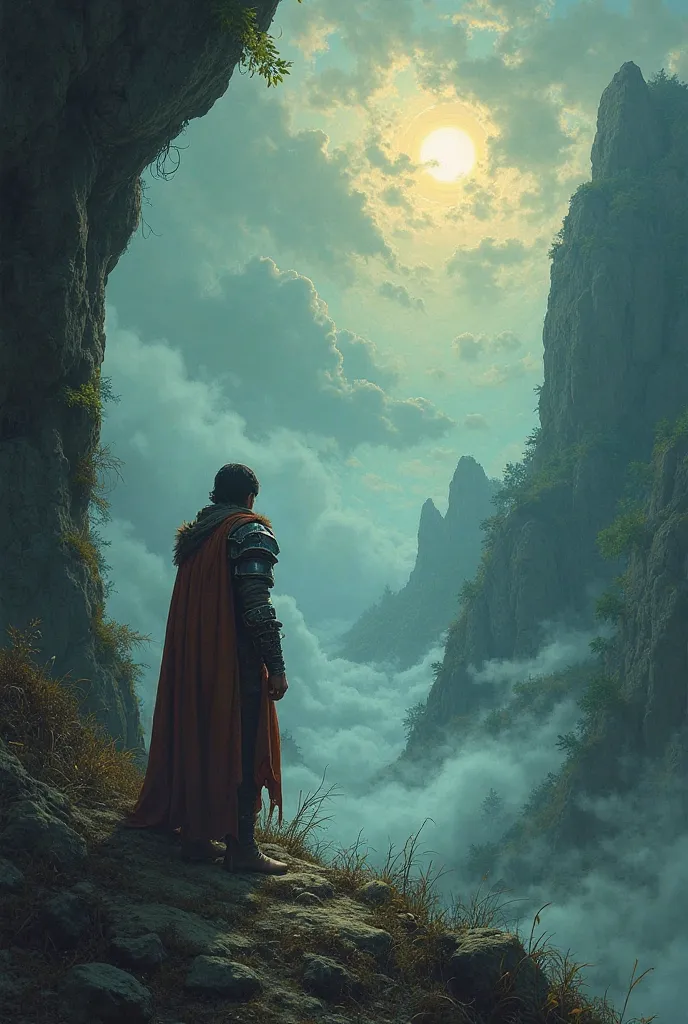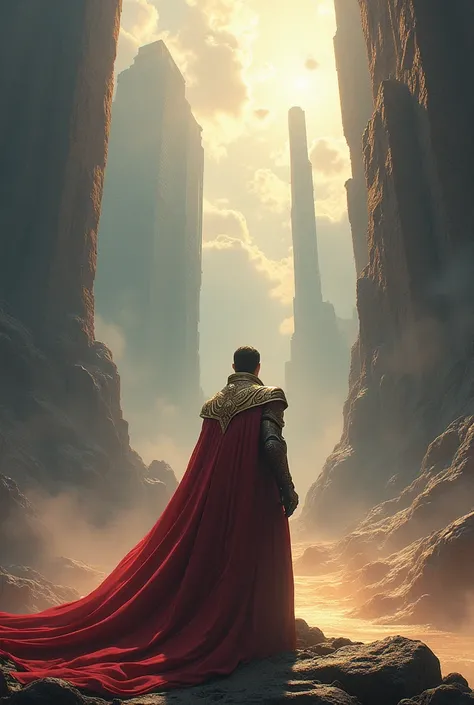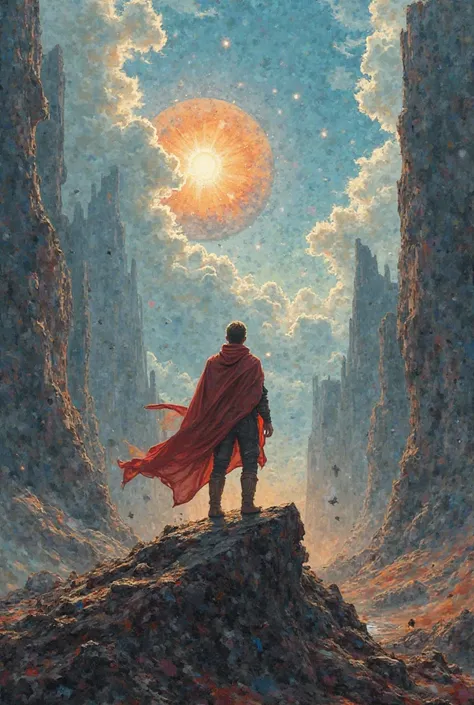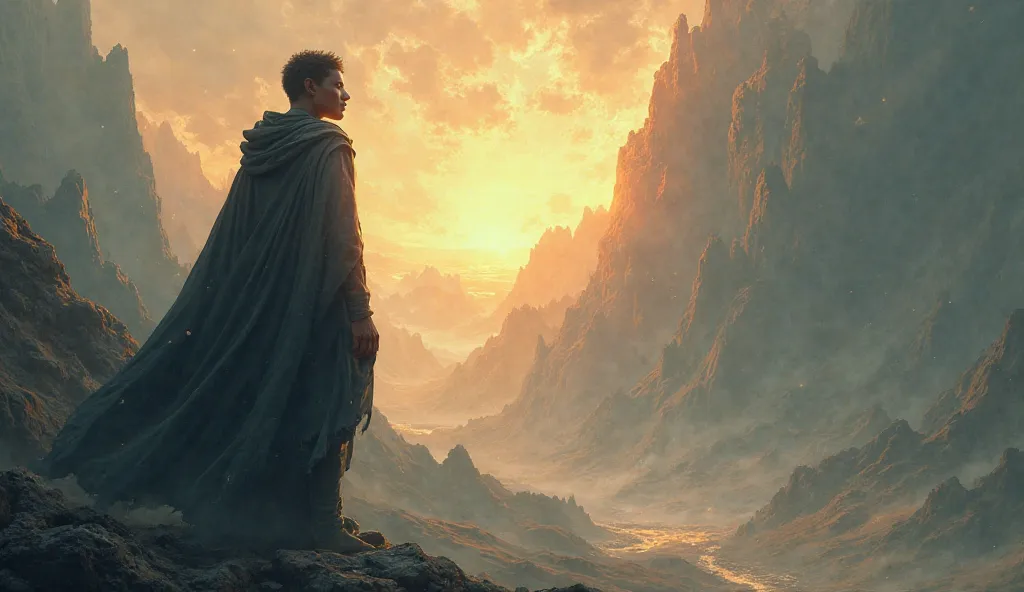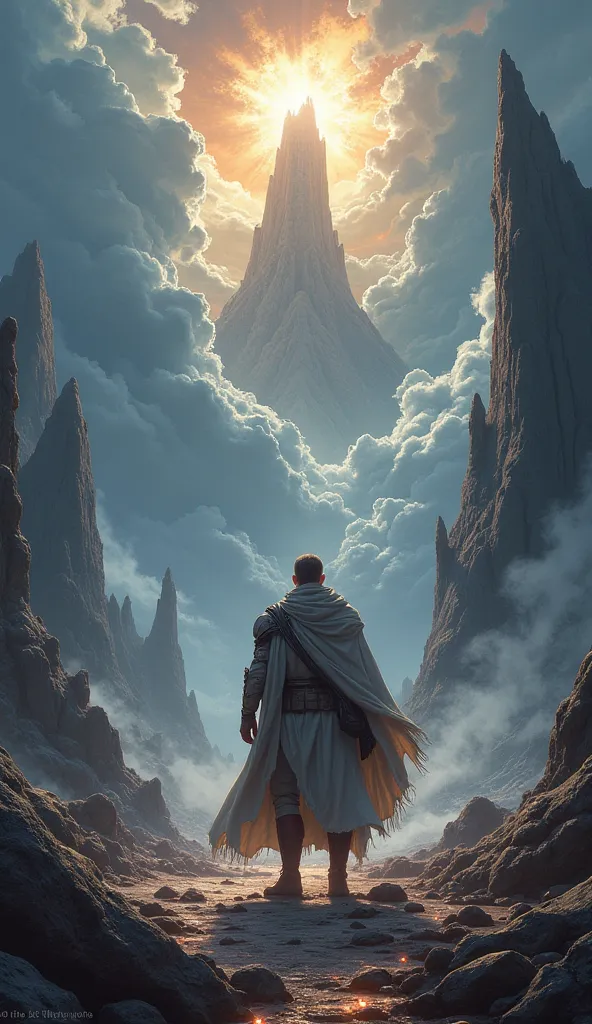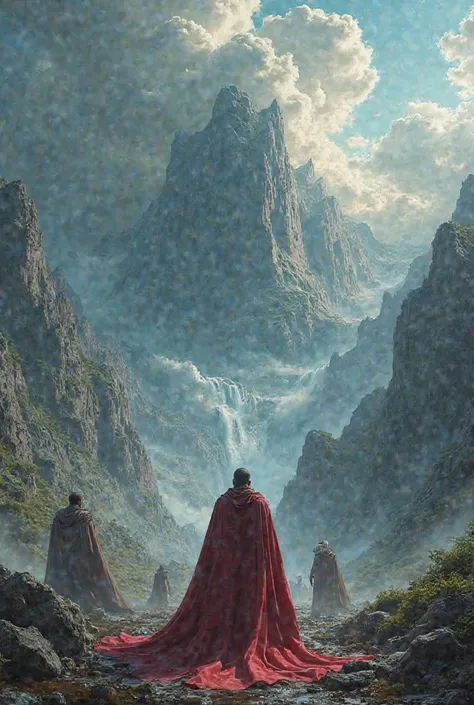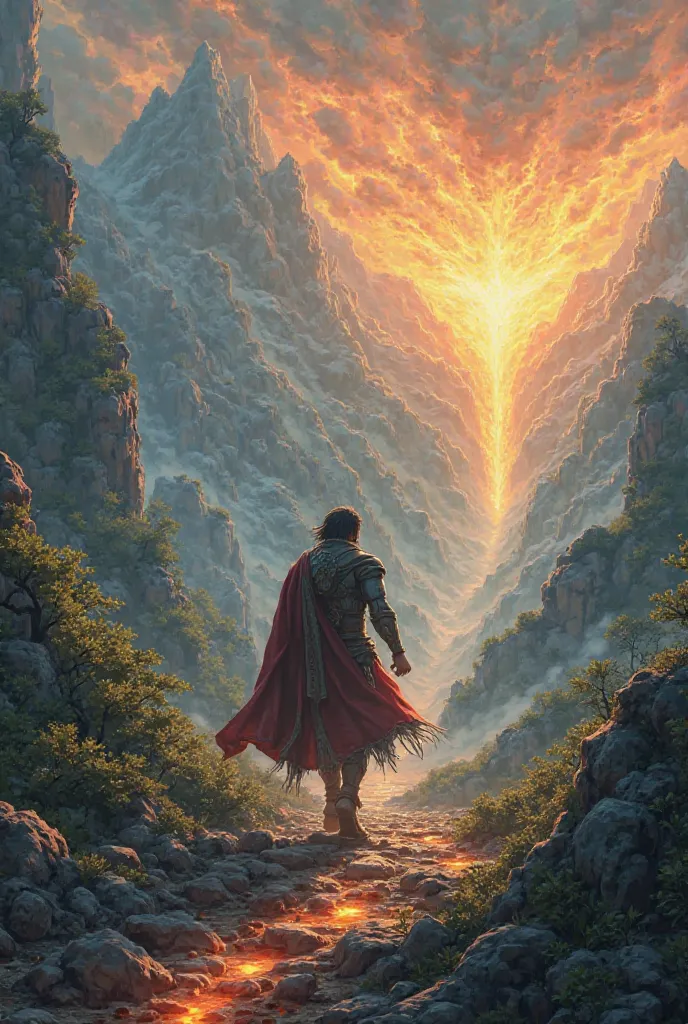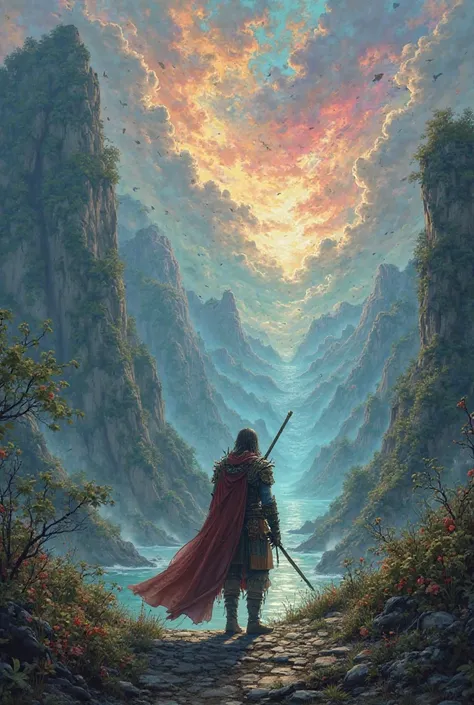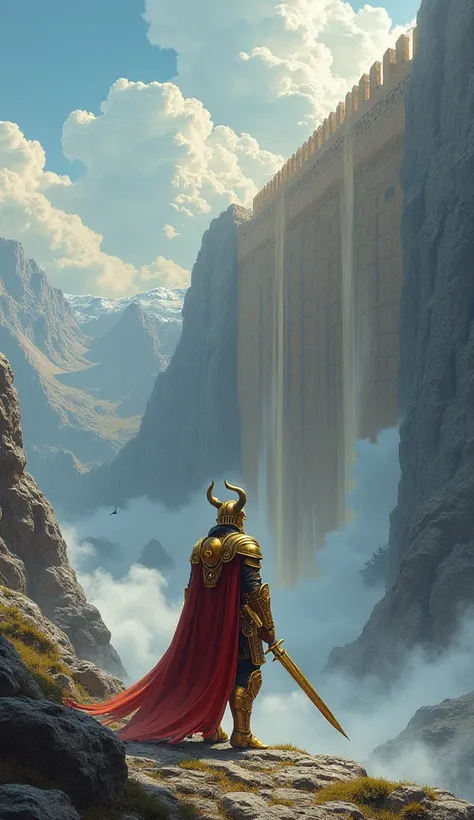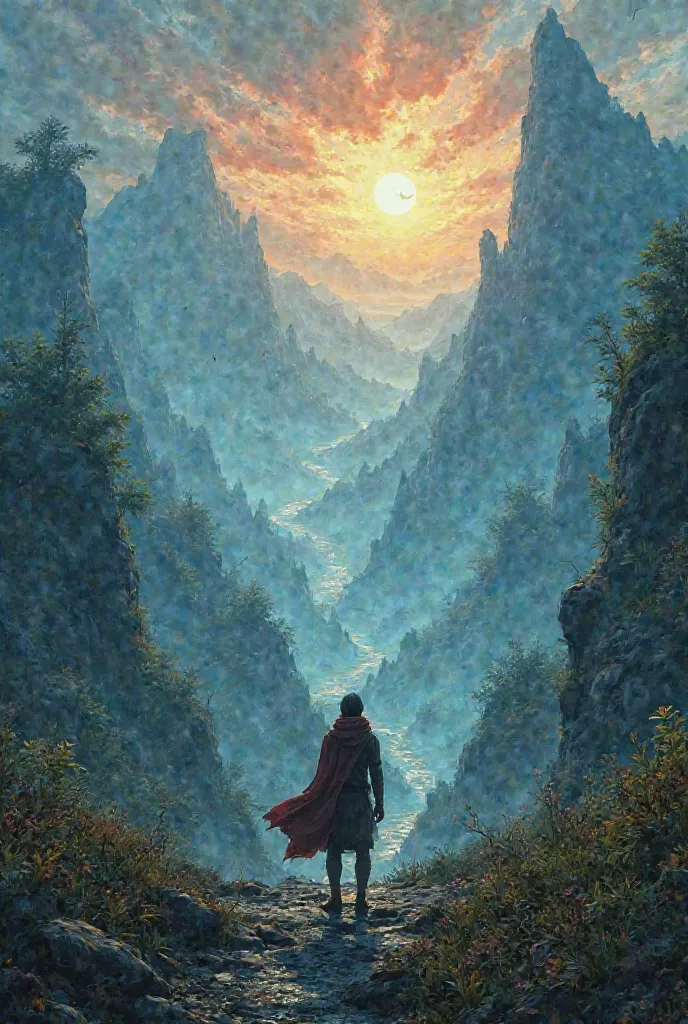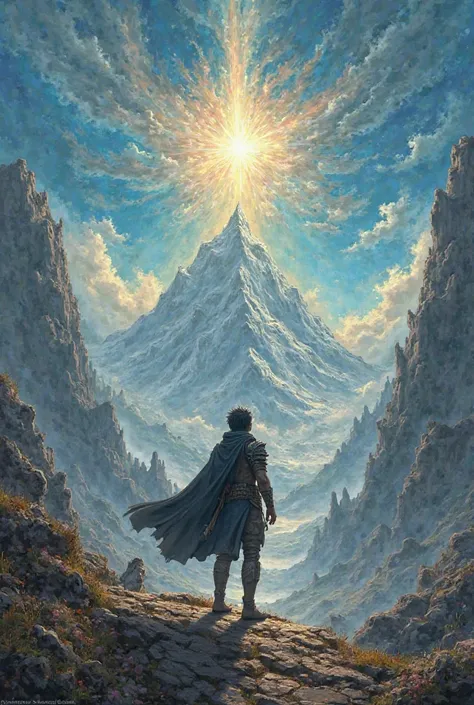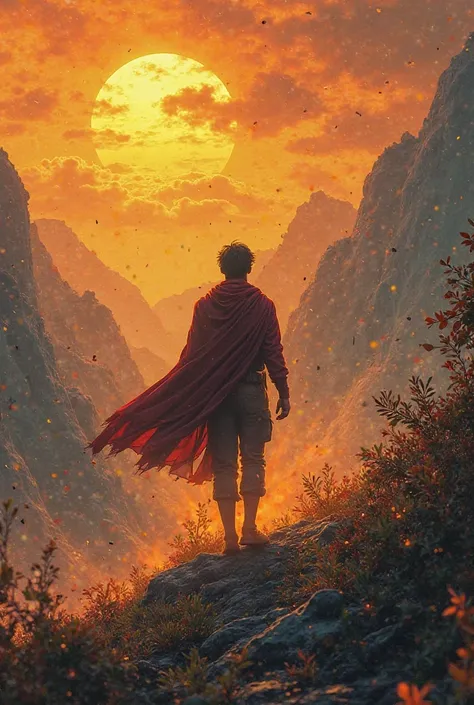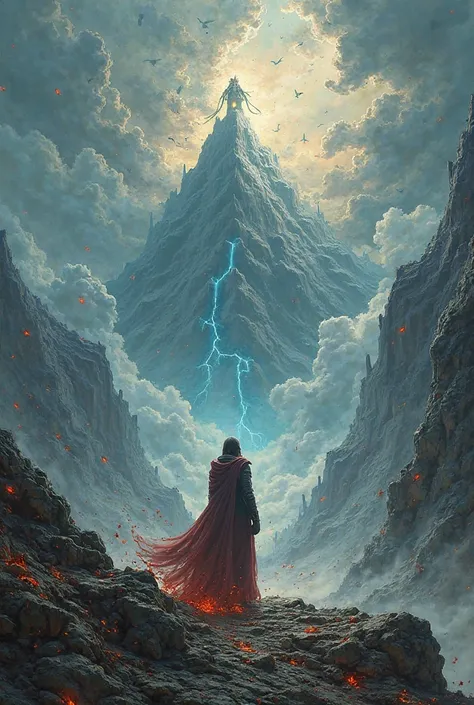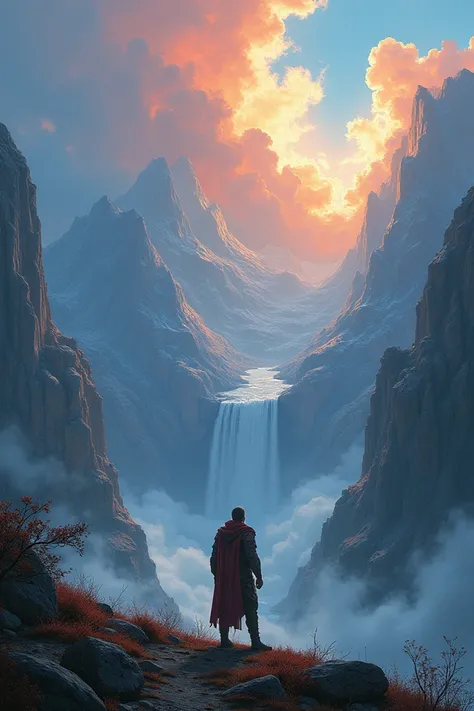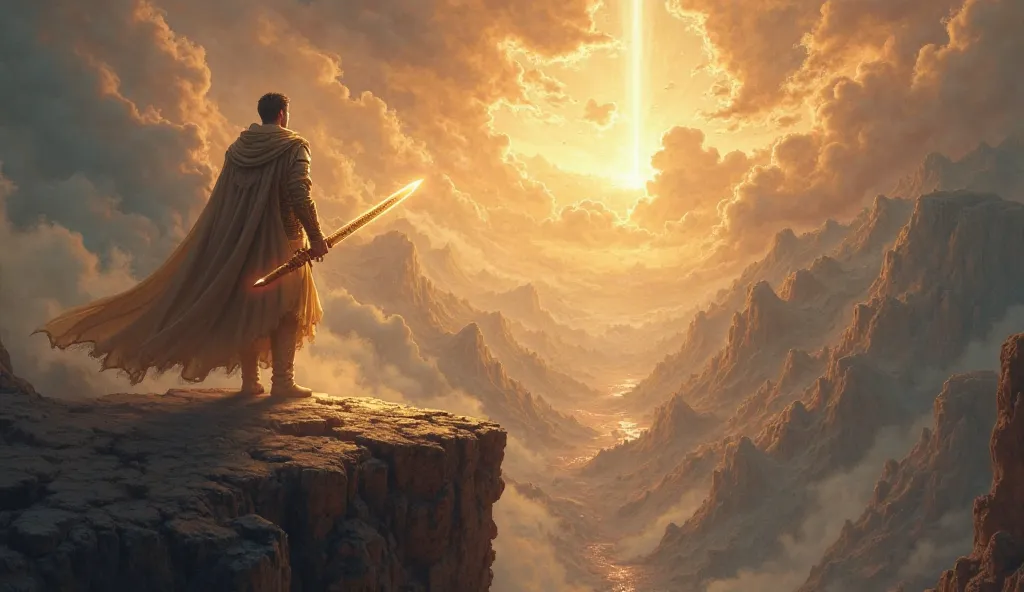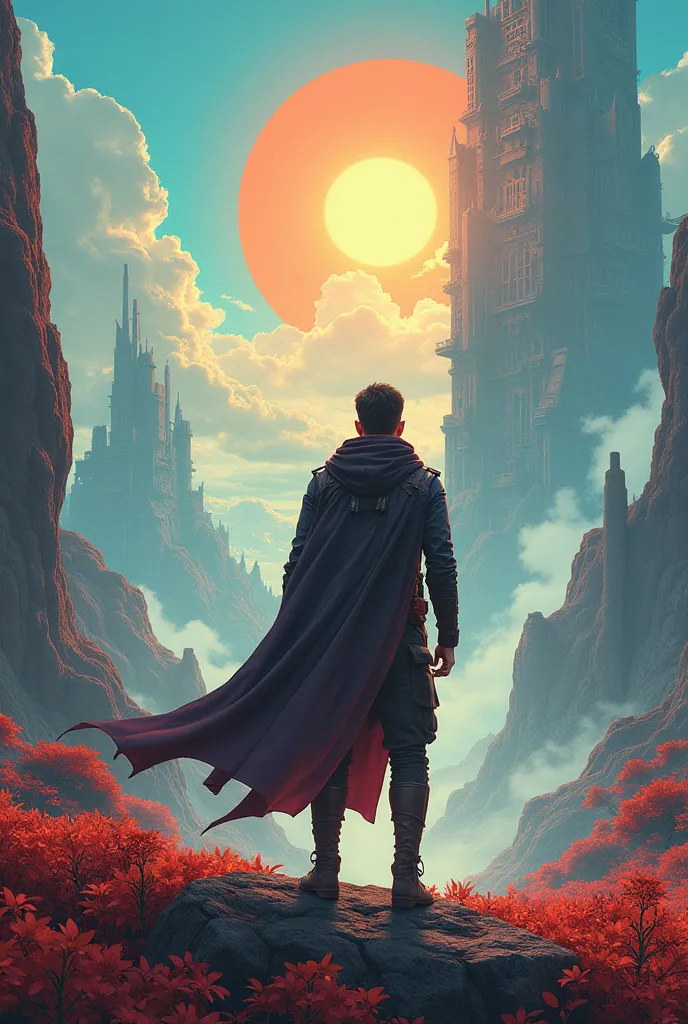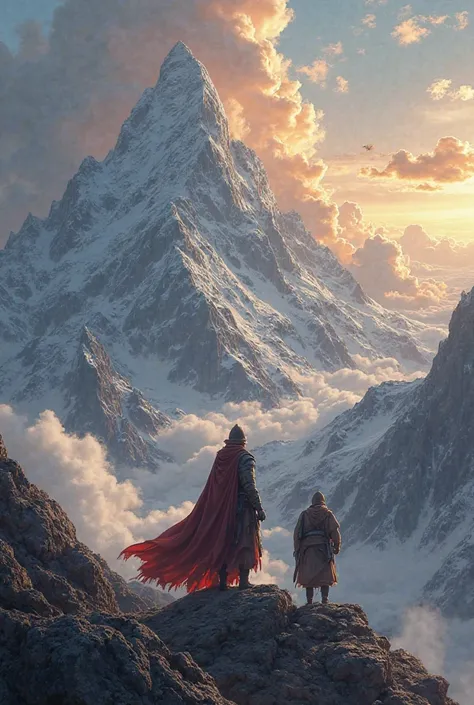In the center of the composition, We see Nietzsche as a central figure
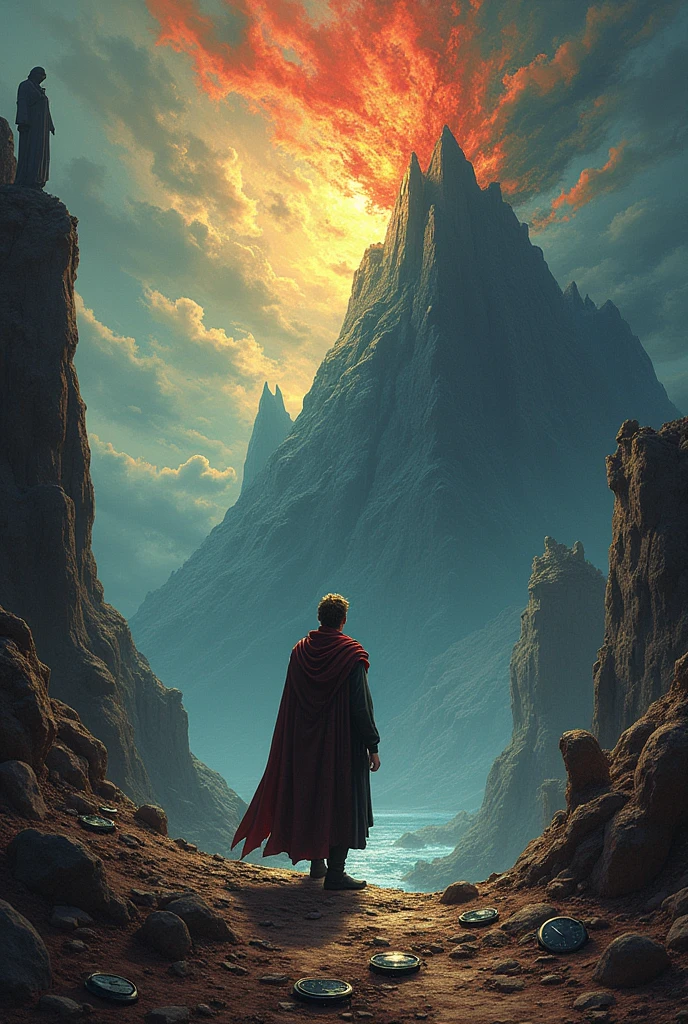
In the center of the composition, We see Nietzsche as a central figure, a kind of vagabond or philosophical traveler, with an expression of intense reflection. He wears a cape that dissolves into a whirlwind of intense colors, symbolizing his break with established moral structures. Around it, The landscape is dramatic and surreal: a vast abyss opens before him, representing emptiness and freedom beyond conventional limits. This abyss is dotted with abstract shapes and shadows, which represent the old paradigms and moral standards that Nietzsche challenges. in the sky, A mix of dark and light tones suggests the duality between chaos and the possibility of a new creation.. Dark tones represent nihilism and the dissolution of traditional values., while flashes of light suggest the emergence of new forms of existence and meaning. Around the abyss, Abstract figures that look like fragments of classical statues and crumbling human figures symbolize the decline of old ideologies and the break with rigid moral norms.. Some of these figures are disintegrating, while others seem to be emerging or reforming, representing the process of creating new values. On one side of the abyss, A mountain rises up that splits into multiple peaks, suggesting the arduous and challenging path towards a new vision of existence, in which the individual must forge his own path amidst uncertainty and complexity. Finally, at the bottom of the illustration, A series of broken clocks and cracked mirrors represents the relativity of time and perception, and how old truths crumble before Nietzsche's new perspective.
Generation Data
Records
Prompts
Copy
In the center of the composition
,
We see Nietzsche as a central figure
,
a kind of vagabond or philosophical traveler
,
with an expression of intense reflection
.
He wears a cape that dissolves into a whirlwind of intense colors
,
symbolizing his break with established moral structures
.
Around it
,
The landscape is dramatic and surreal: a vast abyss opens before him
,
representing emptiness and freedom beyond conventional limits
.
This abyss is dotted with abstract shapes and shadows
,
which represent the old paradigms and moral standards that Nietzsche challenges
.
in the sky
,
A mix of dark and light tones suggests the duality between chaos and the possibility of a new creation
..
Dark tones represent nihilism and the dissolution of traditional values
.,
while flashes of light suggest the emergence of new forms of existence and meaning
.
Around the abyss
,
Abstract figures that look like fragments of classical statues and crumbling human figures symbolize the decline of old ideologies and the break with rigid moral norms
..
Some of these figures are disintegrating
,
while others seem to be emerging or reforming
,
representing the process of creating new values
.
On one side of the abyss
,
A mountain rises up that splits into multiple peaks
,
suggesting the arduous and challenging path towards a new vision of existence
,
in which the individual must forge his own path amidst uncertainty and complexity
.
Finally
,
at the bottom of the illustration
,
A series of broken clocks and cracked mirrors represents the relativity of time and perception
,
and how old truths crumble before Nietzsche'
;
s new perspective
.
INFO
Checkpoint & LoRA
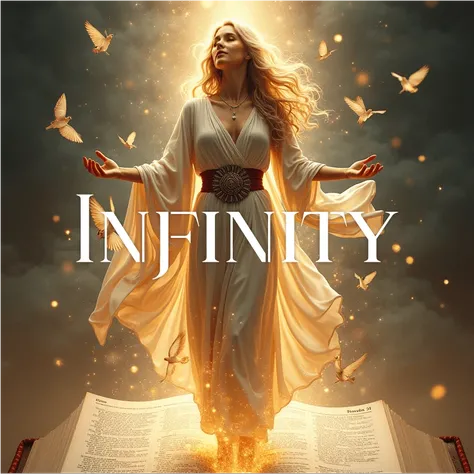
Checkpoint
SeaArt Infinity
#Landscape
#SeaArt Infinity
0 comment
0
0
0










